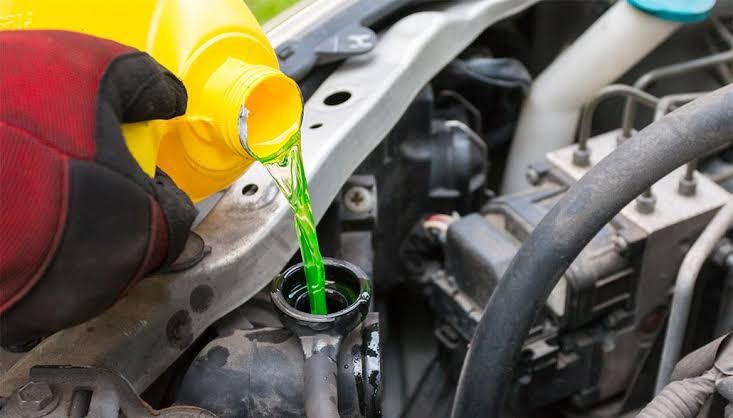Ever noticed your car's coolant level dropping faster than it should? Last year alone, coolant system issues ranked among the top five reasons for roadside assistance calls across North America.
As a master technician with over 15 years in the field, I've diagnosed hundreds of these cases, and I can tell you that understanding why your engine is consuming water could save you thousands in repairs.
The Hidden Causes Behind Coolant Loss
When your car starts gulping down coolant like it's dying of thirst, something's definitely wrong. Engine cooling systems are designed as closed loops, what goes in should stay in. Let's look at the most common reasons your engine might be using more water than normal.
Leaking Head Gasket
A head gasket failure is often the prime suspect when coolant mysteriously disappears. This critical component seals the gap between your engine block and cylinder heads, keeping coolant, oil, and combustion gases where they belong.
Warning Signs:
- White, sweet-smelling exhaust smoke
- Oil with milky appearance
- Bubbles in the coolant reservoir
- Overheating engine
- Unexplained coolant loss without visible leaks
The head gasket operates under extreme conditions, withstanding temperatures that fluctuate between 180°F and 220°F while containing pressure up to 20 PSI. When it fails, coolant can enter combustion chambers where it burns off, causing your cooling system to constantly need refilling.
External Coolant Leaks
Sometimes the simplest explanation is the correct one. External leaks may occur in numerous places throughout the cooling system:
Common Leak Points
- Radiator cracks or damaged seams
- Deteriorated hoses or clamps
- Water pump seal failure
- Heater core leaks
- Freeze plug corrosion
- Damaged reservoir tank
To identify external leaks, I recommend a thorough pressure test of your cooling system. This involves pressurizing the system while cold and inspecting for escaping coolant. A UV dye can also be added to make leaks more visible, they'll glow under a blacklight even when very small.
Blown Cylinder Head
Severe overheating can warp or crack a cylinder head, creating internal pathways for coolant loss. This is particularly common in aluminum heads, which expand more than cast iron when heated.
A cracked cylinder head allows coolant to enter combustion chambers where it vaporizes during normal engine operation. This doesn't just waste coolant, it can cause significant engine damage over time.
The repair for this isn't simple or cheap. It typically involves removing the cylinder head, sending it to a machine shop for inspection, and either repairing or replacing it entirely. Prevention through proper cooling system maintenance is far less expensive!
Faulty Radiator Cap
This tiny component plays an enormous role! A radiator cap maintains system pressure, which raises the boiling point of coolant and ensures efficient heat transfer. When it fails, pressure drops and coolant can boil at lower temperatures.
A bad cap can cause:
- Coolant overflow as pressure builds
- Vacuum formation during cooling, pulling air into the system
- Inability to maintain proper pressure
Testing a radiator cap requires a special pressure gauge, but replacing it is inexpensive typically $10 - 20 for the part. Consider this an easy first check when diagnosing coolant consumption.
Diagnosing Your Coolant Consumption
How can you determine exactly what's happening with your engine? Here's my step-by-step approach:
- Check for external leaks first. Use a flashlight to inspect around the radiator, hoses, water pump, and engine block. Look for dried coolant residue (appears as crusty white or green deposits).
- Pressure test the cooling system. This specialized test can reveal leaks that aren't immediately visible.
- Perform a combustion leak test. A special fluid changes color when exposed to exhaust gases in your coolant, indicating a head gasket or cylinder head issue.
- Monitor temperature patterns. An engine that gradually increases in temperature during idle but cools during acceleration often indicates air in the system from a leak.
- Inspect oil and coolant condition. Oil with a milky appearance or coolant with an oily film indicates the two are mixing, a classic sign of internal leaks.
Prevention Is Better Than Cure
After fixing hundreds of cooling systems, I can confidently say that prevention costs a fraction of major repairs. Here's how to keep coolant where it belongs:
- Maintain proper coolant levels and condition. Check monthly and change according to manufacturer recommendations.
- Address overheating immediately. Pull over safely if your temperature gauge rises into the red zone.
- Use the correct coolant type. Modern engines require specific formulations, using the wrong type can accelerate corrosion.
- Replace the radiator cap every 5 years. It's inexpensive insurance against pressure-related issues.
- Watch for early warning signs. Sweet smells from the engine bay, unexplained coolant loss, or temperature fluctuations deserve immediate attention.
The most expensive repairs I've seen all started as minor cooling system issues that drivers ignored until catastrophic failure occurred. Don't make that mistake! A $50 preventative repair today can save $2,000+ tomorrow.
When to Seek Professional Help
While some cooling system maintenance is DIY-friendly, certain symptoms warrant professional diagnosis:
- White exhaust smoke that doesn't clear after warm-up
- Engine overheating despite proper coolant levels
- Coolant consistently disappearing with no visible leaks
- Engine misfires or rough running with coolant loss
- Milky substance under oil cap or on dipstick
Modern vehicles often have complex cooling systems integrated with other components like turbochargers, EGR coolers, and oil coolers, making diagnosis trickier than in older vehicles. A professional shop has the specialized equipment needed for accurate diagnosis in these systems.
Remember, your engine's cooling system doesn't just prevent overheating, it's critical for fuel efficiency, emissions control, and overall engine longevity. Treating coolant loss as a serious issue rather than just an inconvenience will save you time and money in the long run!

Comments (0)
Please login to join the discussion
Be the first to comment on this article!
Share your thoughts and start the discussion